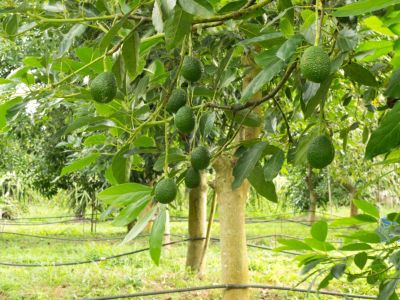Growing your own avocado trees can provide you with a seemingly endless supply of these delicious fruits. However, no plant is without its problems. If you were expecting an avocado tree laden with fruit, but instead have a sickly tree that rarely bears avocado fruits, this article may be for you.
About Phytophthora Root Rot
Phytophthora root rot is a fungal disease caused by the pathogen Phytophthora cinnamomi. This fungal disease affects avocado trees and thousands of other plants. It can be a particularly devastating disease in avocados and is estimated to result in about $50 million in crop loss in California each year. Avocado root rot can affect trees of all sizes and ages. It mostly affects the feeder roots of avocado trees, causing them to become black, brittle, and unable to take up valuable nutrients and life sustaining water. Since these roots lie beneath the soil surface, this disease can severely infect a plant while going mostly unnoticed. The first visible symptoms of root rot in avocado trees is light green to yellow, undersized foliage on infected plants. Leaves may also have brown, necrotic tips or margins. As the disease progresses, foliage will wilt and drop, exposing the fruit to sunscald. The upper branches of infected avocado trees will also die back. Fruit production also declines in infected trees. They may bear small or sparse fruit at first, but eventually fruit production will stop altogether. This disease does usually result in the death of infected trees.
Treating Avocados with Root Rot
Excessive soil moisture and poor drainage are contributing factors of phytophthora root rot. It is most prevalent in sites that periodically floor or puddle up from bad drainage, low grade, or improper irrigation. Fungal spores can be spread by wind, but most often trees are infected from water runoff or infected scion or rootstock in grafting practices. The disease can also be spread by dirty gardening tools. Proper sanitation of gardening equipment and garden debris is always essential in controlling the spread of disease. Prevention is the most important step in controlling avocado root rot. Before planting an avocado tree, ensure that it is in a site with good drainage and no runoff from other potentially infected avocado trees. Berming up the site or adding garden gypsum and organic matter can be excellent ways to provide proper drainage. Planting avocado trees from certified stock is also recommended. A few avocado cultivars that have shown resistance to phytophthora root rot are Dusa, Latas, Uzi, and Zentmyer. While fungicides will not cure root rot in avocados, they can help control the disease. Research has shown that fungicides containing potassium phosphonate can help avocado trees become more resilient to avocado root rot. Fungicides should be used in combination with proper soil conditions, irrigation, and fertilizing practices to treat this condition. Fertilizers that contain ammonium nitrogen and calcium carbonate, calcium nitrate, or calcium sulfate can help avocado trees survive phytophthora root rot.
